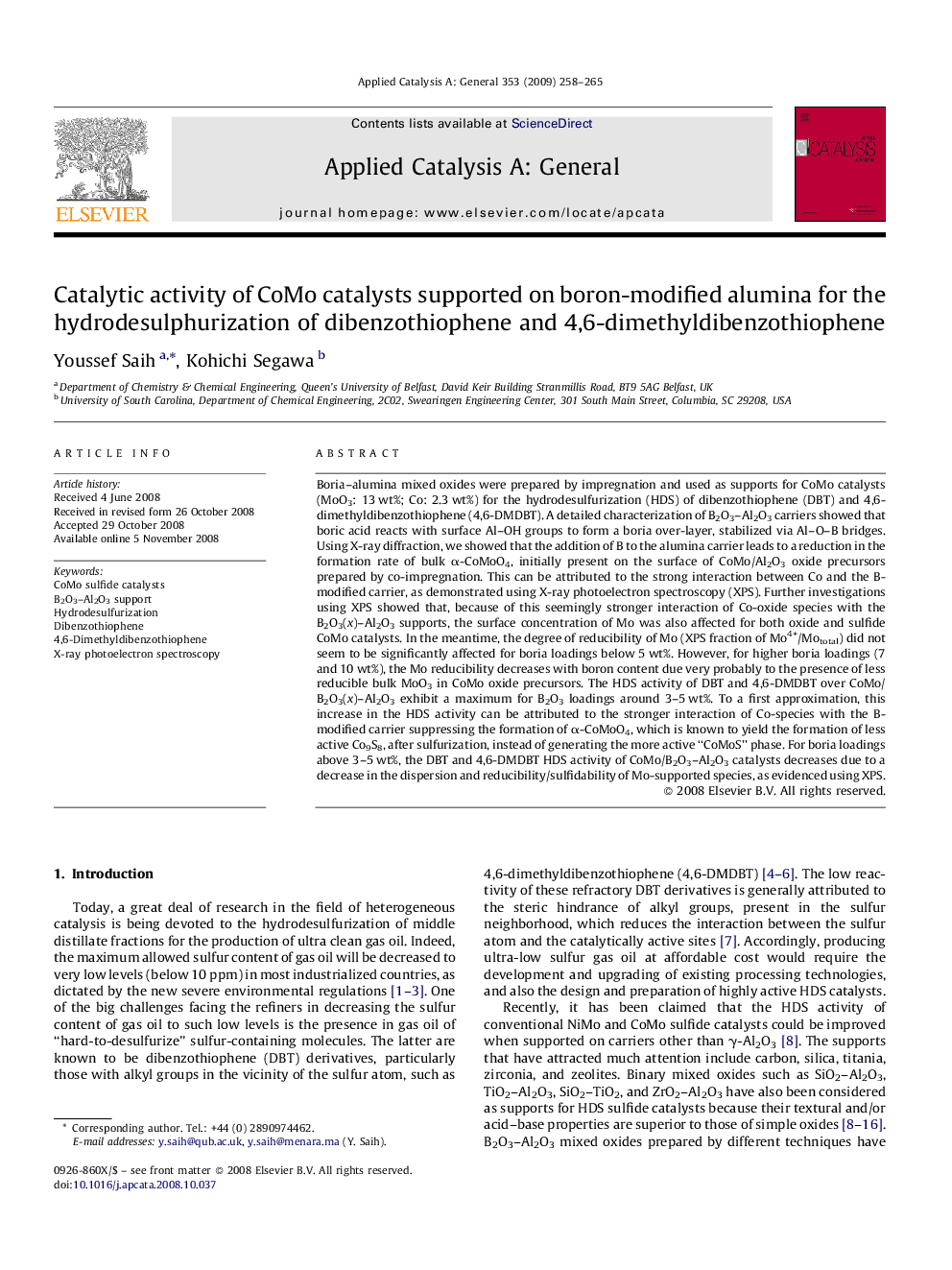| کد مقاله | کد نشریه | سال انتشار | مقاله انگلیسی | نسخه تمام متن |
|---|---|---|---|---|
| 42949 | 45948 | 2009 | 8 صفحه PDF | دانلود رایگان |

Boria–alumina mixed oxides were prepared by impregnation and used as supports for CoMo catalysts (MoO3: 13 wt%; Co: 2.3 wt%) for the hydrodesulfurization (HDS) of dibenzothiophene (DBT) and 4,6-dimethyldibenzothiophene (4,6-DMDBT). A detailed characterization of B2O3–Al2O3 carriers showed that boric acid reacts with surface Al–OH groups to form a boria over-layer, stabilized via Al–O–B bridges. Using X-ray diffraction, we showed that the addition of B to the alumina carrier leads to a reduction in the formation rate of bulk α-CoMoO4, initially present on the surface of CoMo/Al2O3 oxide precursors prepared by co-impregnation. This can be attributed to the strong interaction between Co and the B-modified carrier, as demonstrated using X-ray photoelectron spectroscopy (XPS). Further investigations using XPS showed that, because of this seemingly stronger interaction of Co-oxide species with the B2O3(x)–Al2O3 supports, the surface concentration of Mo was also affected for both oxide and sulfide CoMo catalysts. In the meantime, the degree of reducibility of Mo (XPS fraction of Mo4+/Mototal) did not seem to be significantly affected for boria loadings below 5 wt%. However, for higher boria loadings (7 and 10 wt%), the Mo reducibility decreases with boron content due very probably to the presence of less reducible bulk MoO3 in CoMo oxide precursors. The HDS activity of DBT and 4,6-DMDBT over CoMo/B2O3(x)–Al2O3 exhibit a maximum for B2O3 loadings around 3–5 wt%. To a first approximation, this increase in the HDS activity can be attributed to the stronger interaction of Co-species with the B-modified carrier suppressing the formation of α-CoMoO4, which is known to yield the formation of less active Co9S8, after sulfurization, instead of generating the more active “CoMoS” phase. For boria loadings above 3–5 wt%, the DBT and 4,6-DMDBT HDS activity of CoMo/B2O3–Al2O3 catalysts decreases due to a decrease in the dispersion and reducibility/sulfidability of Mo-supported species, as evidenced using XPS.
In the present work, we investigated the effect of boron on the catalytic activity of CoMo/Al2O3 catalyst prepared by co-impregnation for the HDS of DBT and 4,6-DMDBT at 573 K and 3 MPa. The present study shows that the HDS activity for both DBT and 4,6-DMDBT exhibit a maximum as a function of boron content.Figure optionsDownload as PowerPoint slide
Journal: Applied Catalysis A: General - Volume 353, Issue 2, 1 February 2009, Pages 258–265